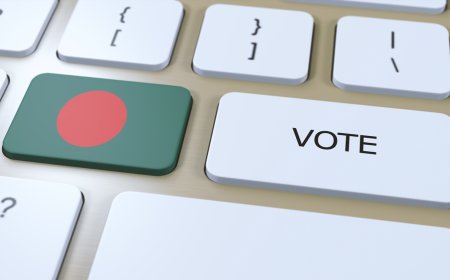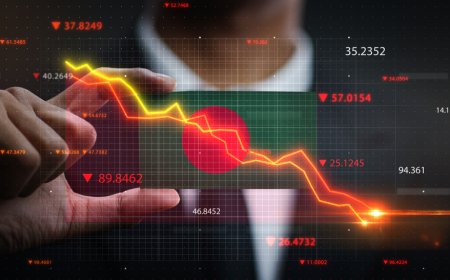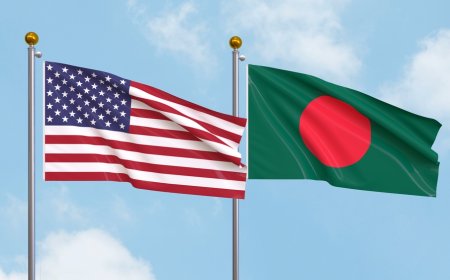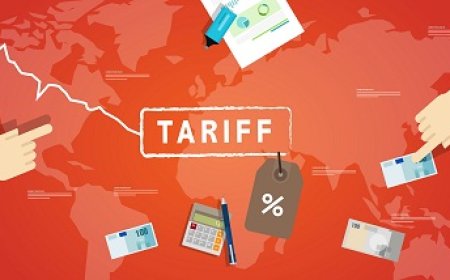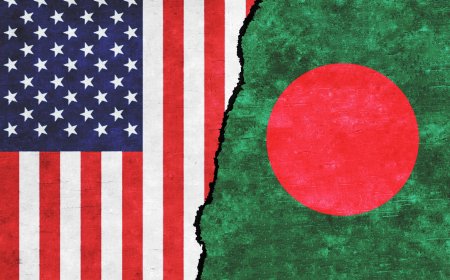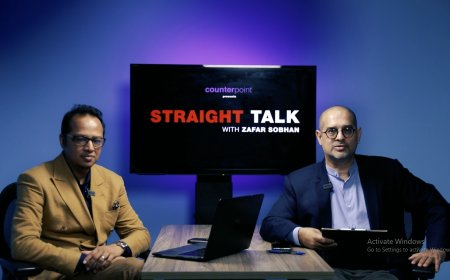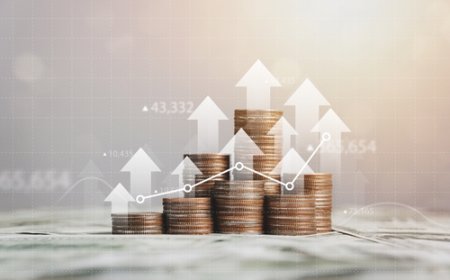The Unlikely Reinvention of the American Dollar: From Oil to Blockchain
This is the quiet evolution of empire -- from military enforcement to financial automation. The dollar isn’t dying, at least not anytime soon. It’s being privatized.

The Birth of a Superpower
In the summer of 1974, a secret meeting in the Saudi desert changed the global economy. US Secretary of State Henry Kissinger and King Faisal of Saudi Arabia struck a deal that would become known as the petrodollar system. In fact that’s when America became one singular hegemonic power in the world.
The deal was simple:
● Saudi Arabia would sell its oil only in US dollars
● In return, the US would provide military protection and advanced weapons
This deal solved a massive problem for America. Just three years earlier, in 1971, President Richard Nixon had severed the US dollar’s last link to gold. The dollar was now a fiat currency, backed by nothing but trust in the US government.
The petrodollar system replaced gold with something even more essential to the modern world: oil.
Now, any country that needed oil had to first get US dollars. To get dollars, they had to export goods to America or borrow from American banks. The dollars they earned would then often be reinvested in US treasury bonds -- meaning they were effectively lending money back to the United States.
This created a perfect economic loop:
The world worked to earn dollars, and those same dollars flowed back to finance American power.
The Era of American Privilege
The petrodollar system transformed the dollar from a currency into the lifeblood of global trade. Because oil and most major commodities were priced in dollars, every nation was forced to hold large dollar reserves. This granted the US what French officials famously called the “exorbitant privilege.”
● A country like Brazil or Bangladesh has to earn dollars through exports before it can import machinery
● The United States can simply create more dollars to pay for its imports
This allowed America to live beyond its means. It could run massive budget and trade deficits without facing the economic crises that would cripple other nations. Foreign countries had to keep buying US debt because they needed a safe place to store their dollar reserves.
The results were profound:
● American consumers enjoyed a flood of cheap imported goods that developed the quality of life
● The US government could fund a powerful military and expansive social programs
● Wall Street became the undisputed center of global finance
● Most importantly, the US gained a powerful geopolitical weapon -- the ability to freeze adversaries out of the dollar-based financial system through sanctions.
The dollar was no longer just money; it was a primary tool of global control.
The Cracks Begin to Show
For decades, the US-led dollar-based financial system appeared unshakable. But after the 2008 financial crisis, the United States launched massive quantitative easing -- effectively creating large amounts of new money. This unsettled countries like China, which feared that such policies would erode the value of their enormous US dollar and Treasury holdings.
Despite their concerns, China did not immediately challenge the system; instead, it continued purchasing US debt, further entrenching itself within the dollar structure. By 2012, however, Beijing began laying the groundwork for alternatives through the Belt and Road Initiative, aiming to expand its economic and geopolitical influence across Asia, Africa, and Europe.
From around 2015 onward, a broader shift became visible: major powers and regional blocs started quietly constructing financial and strategic “escape routes” from exclusive dependence on the dollar-centric system.
● China launched the Asian Infrastructure Investment Bank (AIIB), a direct rival to the US-dominated World Bank
● Russia and China started settling their massive energy trades in their own currencies, bypassing the dollar
● European nations, frustrated by US sanctions on Iran, began exploring alternative payment systems outside American control
The turning point was the 2022 Ukraine war. The US and its allies froze hundreds of billions of dollars of Russian central bank assets.
To Washington, this was a show of strength. To many other nations, it was a stark warning: If it can happen to Russia, it could happen to them.
By 2025, the dollar is still the dominant global currency, but its share of international transactions has slipped from over 85% to around 70%.
The trend is clear: the era of effortless dollar supremacy is ending.
America’s Two-Pronged Problem
The US now faces two deeply interconnected challenges.
The financing problem: The US national debt has ballooned to over $35 trillion. For decades, this wasn’t a pressing issue because global demand for dollars automatically created demand for US Treasury bonds. But as more trade is conducted in other currencies, that demand is softening. If the US has to offer higher interest rates to attract buyers, the cost of servicing its debt could soar, forcing cuts to defense, infrastructure, and social programs.
The power problem: America’s primary tool for enforcing its foreign policy -- financial sanctions -- relies on its control over the global dollar system. If countries can trade oil and critical goods in yuan, rupees, or digital currencies, US leverage diminishes. The “weaponization” of the dollar, while powerful, is also accelerating the search for alternatives.
These two problems create a vicious cycle:
Less dollar demand weakens US power, and weaker US power encourages more countries to abandon the dollar.
The Unlikely Savior: Stablecoins
Just as the old petrodollar system is fraying, an unexpected reinvention is emerging from an unlikely place: the world of cryptocurrency. Stablecoins are digital tokens pegged 1-to-1 to traditional currencies, primarily the US dollar. They were originally created to provide stability for crypto traders moving in and out of volatile assets like Bitcoin.
But their real-world impact has been far more significant.
Here’s the simple but powerful mechanism:
1. A user in Zimbabwe, for example, wants to protect their savings from hyperinflation.
2. They buy $500 worth of a stablecoin like USDT (Tether) or USDC (Circle).
3. The stablecoin company takes their real money and holds it in reserve.
4. To keep that reserve safe and generate a small return, the company invests it in ultra-safe, short-term US Treasury bonds.
The result:
Every time someone in the world buys a digital dollar, real dollars end up financing the US government. By 2025, Tether alone held over $110 billion in US Treasuries -- more than the central banks of countries like Australia or Mexico.
Together, stablecoin issuers have become some of the largest private holders of US government debt in the world.
Tether: The Offshore Dollar Machine
Tether (USDT) operates like the “wild west” of digital money. Based offshore, it faces less U.S. regulation, yet it has become the de-facto dollar for emerging markets.
From Turkey to Argentina, small businesses and freelancers use USDT to escape unstable local currencies. On peer-to-peer platforms, USDT trades like digital cash, allowing people to move value across borders instantly -- often bypassing local regulatory controls. Ironically, Tether -- though beyond Washington’s direct control -- is now deeply integrated with
Wall Street’s bond market.
It converts global demand for digital dollars into steady purchases of U.S. government debt, feeding liquidity back into the American financial system. Behind this sits the Financial Industrial Complex (FIC)—the alliance of Wall Street banks, funds, and institutions that shape U.S. monetary flows.
Tether has become one of its instruments, channeling global money into U.S. treasuries without the government’s direct coordination. In doing so, the FIC gains another lever of influence -- able to impact liquidity and yields, subtly steering U.S. fiscal policy from the private sector outward.
Circle: The Regulated Digital Dollar
Circle, the issuer of USDC, represents the FIC’s institutional face.
Unlike Tether, it is fully compliant, audited, and tightly connected with major US banks and regulators.
Its reserves -- also parked in US Treasuries -- turn Circle into a shadow central bank, one that operates through code rather than law.
When the US Treasury issues new debt, companies like Circle become predictable buyers. In doing so, they reinforce the dollar’s role globally while giving Wall Street and its partners new leverage over Washington’s debt cycle.
In essence, both Tether and Circle are FIC instruments -- one offshore and unregulated, the other domestic and compliant -- serving the same function:
To digitize dollar demand while keeping control over the monetary plumbing firmly in private hands.
The Great Irony
The most remarkable twist in this story is its irony. Cryptocurrency was born from the dream of escaping government-controlled money. Bitcoin’s creator, Satoshi Nakamoto, envisioned a peer-to-peer system that would bypass banks and political interference. Yet the most successful outcome of that revolution, so far, has been the expansion of the Financial Industrial Complex itself.
Stablecoins didn’t weaken the dollar -- they digitized it, and in doing so, they strengthened Wall Street’s grip on global liquidity. Every USDT minted in Dubai or USDC created in Singapore ultimately translates to another Treasury bill bought in New York.
The crypto revolution -- designed to decentralize power -- has become the new delivery system for US financial dominance, this time mediated by private capital instead of the state.
This is the great paradox of the digital age: The tools built to free money from institutions ended up reinforcing their empire.
The New Foundation: The FIC Dollar Order
The dollar’s base of power is changing hands. Where once it rested on state treaties and oil contracts, it now rests increasingly on financial networks and private digital rails.
A new order is emerging on top of the old one. In the new order, the Financial Industrial Complex holds the commanding position.
Besides using stablecoins, FIC holds around $2 trillion worth of US bonds through various offshore tax havens -- a mechanism that allows them to bypass regulations and compliance requirements.
It doesn’t need to lobby Congress to influence monetary policy -- it can do so directly through stablecoin liquidity flows and bond absorption capacity.
This subtle transfer of power means that the US government depends increasingly on private financial conduits to maintain dollar supremacy.
The empire still flies the same flag, but the hands behind the steering wheels are changing.
The Path Forward
Fifty years ago, the dollar’s dominance was sealed with a handshake over oil. Today, it is being reborn through code and contracts, powered by the digital infrastructure of the financial-industrial complex (FIC).
The petrodollar era was built on alliances; the digital dollar era is built on APIs. The first depended on state power; the second runs on financial software. The United States, once anchored by diplomatic statecraft, now increasingly floats on the balance sheets of private capital and crypto liquidity pools.
This is the quiet evolution of empire -- from military enforcement to financial automation. The dollar isn’t dying, at least not anytime soon. It’s being privatized. From a cynical perspective, this privatization implies that the US is being gradually hollowed out by the financial-industrial complex.
And within that privatization lies both its resilience -- and its deepest vulnerability.
What's Your Reaction?















